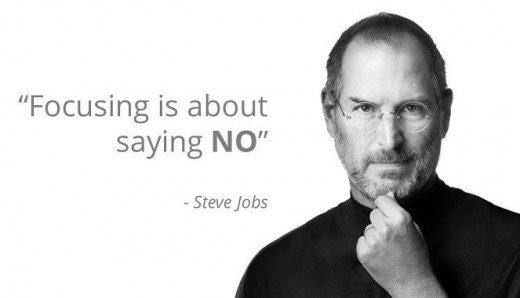How To Successfully Master The Word NO

Do you have trouble saying no?
Every single person in the world has to deal with the struggle that is standing their ground firmly and speaking up for themselves. In the words of author Shannon L. Alder, “Staying silent is like a slow growing cancer to the soul and a trait of a true coward. There is nothing intelligent about not standing up for yourself. You may not win every battle. However, everyone will at least know what you stood for — YOU.” Being able to stand up for yourself has always been important, but it’s become an even bigger concern in this age of technology; where there are so many new opportunities to be pressured into doing things that you don’t want to do, more people enter into your life because of the worldwide connections that can be built through the internet and modern technology, and there are so many more things that can distract you from your purpose and the desire to stick up for yourself when you want to say no.
We’re taught as children in the beginning of our lives that we need to be able to stand up, and when we don’t like something we’re taught to say ‘no’ automatically to the situation. If something makes us uncomfortable or unhappy, or we don’t want something to happen to us, ‘no’ is the easiest answer to give. No need for a reason or back story as to why we say no, it is a full stop sentence. Sure, as kids we might have used this a bit too much, but that was the point of declaring things we just were not comfortable with. However, as time progresses we’re eventually told to sit down and deal with the difficult and unsavory situations we are put in, instead of saying ‘no’. Why is this? What stops us from sticking up for ourselves and not doing things that we don’t like or getting away from situations that aren’t healthy for us?
The popular adage that states the opinion that good fences are what makes good neighbors is meant to imply that having clearly set and immovable boundaries is the best way to maintain human relationships. It’s an important skill to have that will improve both your personal and professional life. One of the more important parts of ‘building a good fence,’ as the adage calls it, is learning how to say no when you don’t want to do something. No matter how well-set your boundaries are, they’re useless to you they aren’t enforced. And you can’t enforce them if you can’t say no.
If you’ve decided to give this book a chance, it’s clear that you feel as though you need help being more assertive and you want to learn how to stick up for yourself. You’re not alone. There are a lot of people, men and women alike, that have a difficult time saying no to things. There are many reasons that we may choose to throw ourselves under the bus and say yes when we really don’t want to. Maybe you want to be viewed as someone that is a team player. Maybe you just want to feel as though you are being included in things. Another common reason is the desire to make everyone else happy and avoid hurting other people’s feelings by proverbially closing a door on them by not accepting their request. Sometimes things are accepted out of guilt as well, or even just so that you can prove to other people that you are capable. For a lot of people, it just feels too difficult.
Being able to stand up for yourself and say ‘no’ when you absolutely need to is not as hard as it may seem to be. The more that you let yourself duck down and accept things you’re not okay with, the harder recovery will be to pick yourself back up and dust yourself off. No one wants to be known as a pushover, it’s not ideal at all. Pushovers and people pleasers are the two types of people that most humans will start to take advantage of. If you’re not able to say no and be assertive with what you want, people will remember that. They may have even already started to take advantage of you and you want it to stop. Of course, the transition from people pleaser to someone who does not let others step all over them isn’t a quick one. There’s a fine line between being assertive and being arrogant and you definitely do not want to accidentally blur the lines. It’s important to be respectful when you are being assertive, or else you could easily get burned. Being more assertive in your life will make it so that you are able to communicate your ideas and desires better, and usually most of the stress that one feels about always trying to impress and please people will finally be conquered.

Simple Tips For Saying No
There are two different ways that you can help yourself when it comes to learning how to say no; short term solutions and learning skills that you can use in the long term. These short term tips will help you when you find yourself in a position where you would like to say no but you’re having a hard time making yourself actually do it.
- Create and enforce a period of twenty-four hours as an official thinking time in between being faced with something that you want to say no to and actually giving an answer to the question.
This isn’t always possible, but there are plenty of requests that are made that you don’t have to answer immediately. It’s easy to wait to answer emails and voicemails. Sometimes, when people ask you things face to face, they are fine with waiting for an answer. During this pause period, take your time thinking about what you can achieve if you say yes. Is it worth your time? Sometimes, we might not want to do something, but when we think about it for a while, we realize that it’s worth it. It’s okay to do something that you don’t really want to do if you feel as though it’s worth it. Other times, it’s difficult to come up with reasons why you should do it, and the lack of reason might help shine a light on why saying no is a better option. Think about the other things that you have on your plate while you’re making these considerations. Do you even have enough time to take on this request? Are you going to have to give up on something that you do want to do in order to do this thing that you don’t want to do? When you think about the stuff that you’ll be missing out on, you’ll be giving yourself more reason and more motivation to stick up for yourself and say no.
As an example, let’s say that you just got an invitation to an event that you aren’t interested in attending. Thank the person for giving you the invitation and politely let them know that you have to check your schedule before you can answer, and let them know that they’ll have your answer the next day. That way, you’ll be able to ask for the time that you need to think your answer over without feeling like you’re being rude to the person that’s asking. If after your twenty-four hour thinking period you’ve come to the conclusion that you still don’t want to do it, then you can approach the person that is waiting for an answer in whatever way is best for you; email, text message, phone call, personal meeting, or any other option that you can come up with that will help ease your worry and make you feel comfortable before the conversation even begins. For some people, saying no via text or on the phone is easier than doing it when they’re face to face with the person that they have to say it to. Decline their offer just as politely as you asked for more time. Thank them for the offer again, let them know that you can’t do it, and then let them know that you’d love to attend a future event with them. That will show that you’re grateful for the opportunity to say yes and show that you’re interested in future offers, which will make it easier to say no because you will have more to say than just the negative response.
- When you say no, make sure that you do so with authority and grace.
You don’t want to fear the word no. If you have a hard time using the word, it might be because it feels like a powerful and intimidating word. As scary as it may seem, that short little two lettered word can be very liberating. But in order to get to that point, you have to be able to say it. One of the easiest ways to make saying no easier is to make sure that you’re doing so politely. Just knowing that you’re saying no in the nicest and most polite way possible might make it easier to say. For some people, saying no feels rude. It feels like they’re giving the impression that they feel negatively about the person that’s making the request. One of the most common reasons that people can’t make themselves say no to other people is because they’re making excuses about how impolite they must sound. Many other people feel guilty about the idea of saying no. You can’t focus on either of those excuses if you are choosing to focus on how to be as polite as possible instead. Besides, you may feel more willing to say no if you are absolutely sure that you are doing it in the most respectful way possible. You can’t feel bad about thinking that you’re being rude if you know for a fact that you are not being rude.
Always begin by thanking the person that you want to say no to. It acknowledges the fact that by offering you the opportunity, they did something that is worthy of gratitude. It also opens up a window for the simple segue word, “but.” “Thank you for asking, but…” Then you follow that quickly with your no. Keep it simple, but not too simple. Let them know that you won’t be able to make it, or you aren’t capable of doing whatever they asked for. Instead of simply saying no, which could feel like a lazy or rude response, you’re telling them that there’s something stopping you. Not wanting to do something is a perfectly valid roadblock for saying yes. Then close it off by letting them know that you appreciate their offer as a means of thanking them for the offer again. By starting and ending on positive notes, both you and the person that you’re talking to will feel better about the fact that you decided to decline. If the person continues to press you, stay firm and let them know that you can’t and thank them again.
Always avoid giving people half answers like a maybe when you are positive that the answer is no. When you say maybe, you’re saying that there is a possibility that you want to say yes. If you’re absolutely sure that you do not want to do something, saying maybe will offer false hope, which will make it even more difficult to want to say you because you’ll see the hope that your maybe creates and not want to be the reason that hope disappears. It’ll make it more difficult for you to want to say no when the time comes.
If this is an instance where the only reason that you had to say no is because you just did not have the time or you had too many other things already on your plate, then say so and make sure that you make it clear that you’d like to be asked again if another such opportunity arises.
- Why It's Important To Say No | HubPages
It's important to remember that knowing how and when to say no is an important aspect of making sure that your boundaries are respected. Read further for more information on why it's so important and more information on how to master it. - Saying No For Pushovers And People Pleasers | HubPages
As hard as it may be, saying no is an important skill. For people pleasers and pushovers, it can be especially hard. Read further to get a few tips on how to say no.








